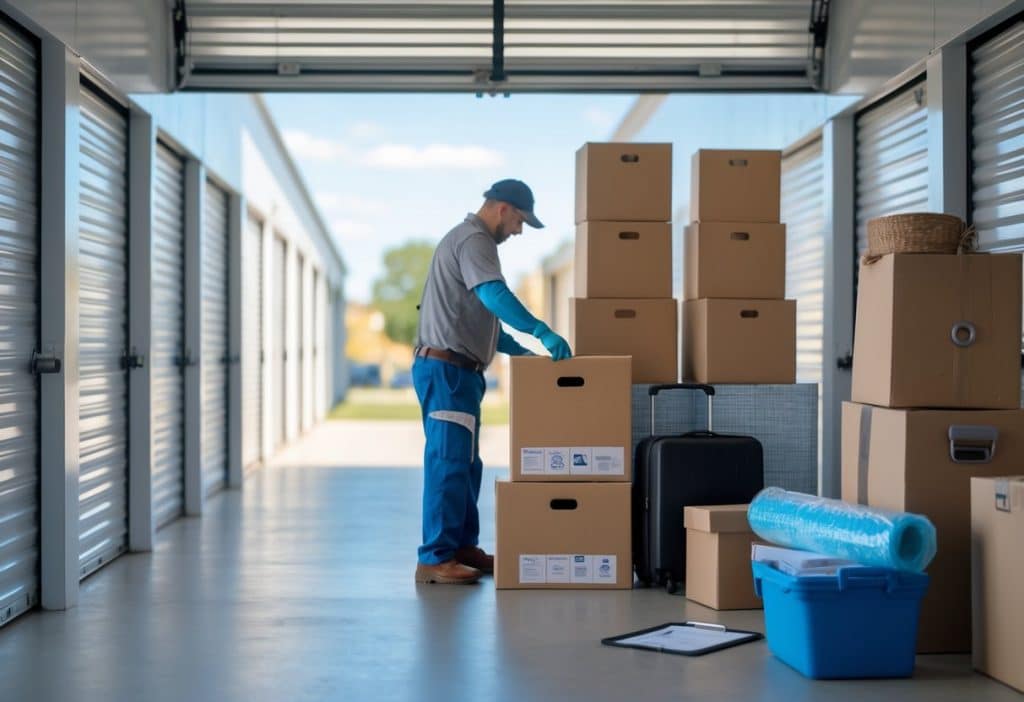Moving to a new home is often considered one of life’s most stressful events—right up there with divorce and job changes. Between packing, coordinating logistics, saying goodbye to familiar places, and adjusting to a new environment, the process can quickly become overwhelming. But it doesn’t have to be that way. With the right mindset, planning, and a few practical strategies, you can make your move far less stressful and even a little exciting. Here’s how:
1. Start Planning Early
One of the biggest stressors when moving is simply not having enough time. The earlier you start planning, the smoother everything will go. Ideally, begin at least a month or two in advance. Create a moving checklist with all the tasks you’ll need to handle, from sorting your belongings to setting up your new utilities.
Breaking down the process into smaller, manageable tasks and spreading them out over several weeks keeps things from piling up at the last minute and makes the process feel more in control.
2. Declutter Before You Pack
Packing your entire life into boxes can feel like an impossible task—unless you lighten the load first. Use this opportunity to declutter. Go through your belongings room by room and decide what to keep, donate, sell, or throw away. Be honest with yourself about what you actually use or love.
Decluttering can make the physical part of the move easier, but it can also help you feel emotionally lighter. It’s a great way to start fresh in your new home without carrying unnecessary baggage—both literal and figurative.

3. Stay Organized
Organization is your best friend during a move. Clearly label each box with its contents and the room it belongs in. You can use color-coded labels, a numbering system, or both—whatever works for you. Create a master inventory list so you can quickly find what you need once you’re in the new place.
Also, keep all your important moving documents in one easily accessible spot. That includes your lease or closing paperwork, moving contracts, utility information, and address change confirmations.
4. Consider Using a Storage Unit
A storage unit can be a lifesaver during a move, especially if there’s a gap between moving out and moving in, or if you’re downsizing and unsure of what to keep. It gives you flexibility and reduces the pressure to make snap decisions about your belongings. You can store non-essential items temporarily and move them into your new home gradually, once you’re more settled. It’s also helpful if you’re staging your current home for sale and want to declutter it to make it more appealing to buyers. Having that extra space available can provide peace of mind and significantly ease the stress of juggling timelines and boxes.

5. Hire Help If You Can
If your budget allows, hiring professional movers can take a huge weight off your shoulders—literally. Movers are trained to handle furniture, navigate tricky staircases, and pack items efficiently. It can save you time, back pain, and potential damage to your belongings.
If hiring movers for the full job isn’t feasible, consider hiring them just for the heavy lifting, or even for a few hours of help. And don’t hesitate to call in favors from friends and family—but be sure to give them advance notice and say thank you with food or drinks.
6. Take Care of Essentials Early
It’s easy to forget the logistical details, but they can cause major stress if left until the last minute. Make a list of services that need to be transferred, set up, or canceled. Schedule utility connections, internet setup, and mail forwarding in advance.
Also, pack a “first night” essentials box with things like toiletries, a change of clothes, basic kitchen items, medication, chargers, and important documents. You’ll be grateful to have easy access to these when you’re surrounded by boxes and too tired to dig through them.
7. Stick to a Routine When You Can
Moving disrupts your life, so it helps to maintain some routine where possible. Eat regular meals, go to bed and wake up at your usual times, and carve out some moments for yourself. This sense of normalcy is especially helpful for children and pets, who thrive on consistency.
Take breaks throughout the process. Even 10 minutes to breathe, stretch, or take a walk can reset your energy and help you stay grounded.
8. Give Yourself Time to Settle In
You don’t need to unpack everything immediately. Start with the essentials—bedrooms, bathrooms, and the kitchen—and tackle the rest at a comfortable pace. Trying to make everything picture-perfect on day one adds unnecessary pressure.
Let your new home evolve naturally. Over time, you’ll figure out where things belong, what furniture works best where, and what new habits or routines might suit the space.
9. Be Emotionally Prepared
Even if you’re excited about the move, it’s perfectly normal to feel some emotional upheaval. You’re leaving behind familiarity and routine—and possibly friends, neighbors, or a beloved community.
Acknowledge your emotions. Talk about them with loved ones, journal if it helps, and remember that it’s okay to grieve while also looking forward. Make a point to stay in touch with people from your old neighborhood and be open to meeting new people and discovering new favorite spots in your new area.
10. Practice Self-Care
Moving is physically demanding and mentally taxing. Amid the chaos, don’t forget to care for yourself. Make sure you’re eating well, staying hydrated, and getting enough rest. Build in time to decompress—whether that’s listening to music, meditating, reading, or just zoning out with a comfort show.
Stress is cumulative, so addressing it early and often through small acts of care can make a big difference in how you feel throughout the moving process.
11. Celebrate the Move
Once the dust settles, take a moment to celebrate this new chapter. Whether it’s ordering takeout on your first night, inviting friends over for a casual housewarming, or simply enjoying a quiet moment in your new space, find a way to mark the occasion.
Moving is a lot of work—and getting through it is something to be proud of.
Moving doesn’t have to be a nightmare. With solid planning, organization, and a bit of self-compassion, you can turn a potentially chaotic process into a manageable—and maybe even enjoyable—transition. Whether it’s leaning on a storage unit for breathing room or just remembering to take breaks and breathe, each small step you take to reduce stress adds up. Soon enough, your new place will feel like home.
Author
-
Arthur Waldmann is the Marketing Director at Iron Storage and a thorough researcher of the self storage industry. Feel free to send any questions his way.
View all posts







